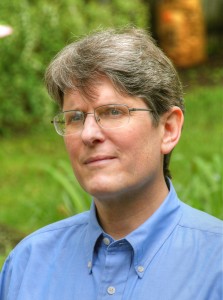
Bob Massie is not someone that you would want to bet against.
In the 56 years since he was born with a severe case of classic hemophilia, Bob has picked up degrees from Princeton University, the Yale Divinity School and the Harvard Business School. He’s contracted HIV and Hepatitis C from contaminated blood products and medications, and undergone a liver transplant. He’s directed the Project on Business Values and the Economy at Harvard Divinity School, written a prize winning book about the anti apartheid movement, served as Executive Director of Ceres, and made an unsuccessful run as the Democratic candidate for Lieutenant Governor of Massachusetts.
As befits someone with these kinds of accomplishments, Bob’s new challenge – as President of the New Economics Institute – is no less than the transformation of the global economy.
The New Economics Institute (NEI) was established to respond to the need for a U.S. voice for a ‘New Economics’. NEI hopes to help develop and effectively promote systemic solutions to the ‘series of systemic problems that now face humanity’, including the sustainability crisis of climate change and dwindling natural resources; the social crisis of global inequality; the financial crisis of systemic instability, and the ‘well-being’ crisis in which rising income does not translate into rising happiness. Last weekend I attended NEI’s inaugural Strategies for a New Economy Conference which also served as a platform for launching Bob’s new Presidency.
Held at Bard College on the Eastern shore of the Hudson River, the conference included leading New Economy activists from across the country, as well as a healthy contingent from NEI’s sister organization in Great Britain, the new economics foundation.
The new economy movement should not to be confused with the sustainability movement. At its best the sustainability movement reflects an important societal shift from approaching the planet as an inexhaustable trust fund and bottomless waste basket to recognizing that the planet has an existence and requirements apart from our needs and wants, and that those requirements impose an incontestable claim on our attention.While this shift does represent progress, sustainability’s mainstream often manifests an inclination to treat the planet as the junior partner in the existence project, embracing the mistaken notion that sustainability can be pursued on our terms, rather than on the planet’s.Whilst erecting the new church of the triple bottom line and worshiping at the altar of alignments that claim to seek to optimize outcomes for people, planet, and profits, the mainstream sustainability movement often functions as if technological innovations will allow for a radical decoupling of economic activity from environmental impact and allow us to continue to pursue the maximization of profits and economic activity.
The new economy movement, on the other hand, is premised on the notion that the planet is the senior partner in this existence project. As such, the planet sets the terms, which it is unequivocally asserting in the calvacade of ecological crises that we are currently confronting. New economy activists believe that the reality of planetary finitude will require a fundamental transformation to an economy that is driven by different values, governed by different rules, and comprised of different components.
Accordingly NEI’s conference was organized around themes like “Measuring Well Being: Alternative Indicators of Wealth and Progress”; “Banking and Financing a New Economy: Scale, Criteria, Innovation”; “Rebuilding Local Economies: Engines for Resilience”; “Reimagining Ownership and Work: Coops, Stakeholders, Corporate Structure”; ‘Transforming Money: Structuring, Issuing, and Valuing New Mediums of Exchange”; “Sustainable Production and Consumption: Simplicity, Sufficiency, Abundance”; and “Visioning and Modeling the New Economy: Shared Prosperity within Planetary Limits”.
The keynote and plenary panels (Bill McKibben, Gus Speth, Gar Alperovitz, and David Orr) provided big picture and big inspiration, while the workshops (including one on Maryland’s Genuine Progress Indicator) highlighted promising initiatives that illuminate and exemplify possible paths forward.
As one might expect, the new economy activists are an intrepid bunch. Nonetheless, and notwithstanding the hundreds of compelling examples of new economy practice (many of which were highlighted at the conference, and many more of which can be found here, here, here, and here ) it remains difficult to establish and maintain confidence that the change that is needed can be achieved at the pace that is required. At the same time, it is also difficult to escape the sense that current and expected conditions – stagnation, decay, and intermittent crisis – may be particularly propitious for the exploration, experimentation, and movement building that transformational change will require.
As much as anything, then, the conference sought to build a bridge over the dismay and self-doubt that any transformational challenge inevitably generates. Indeed, some of the conference’s most powerful moments were when keynoters sought to implant in their audience the collective chutzpah that will be necessary in order to act as if we can move history.
On the train ride along the Hudson back to New York’s Penn Station, I was especially moved by the way that Bob Massie – no stranger to doubt himself – exhorted us to embrace the moment of radical reinvention. “We can see the forest”, he reminded us, “because we are the trees”.
